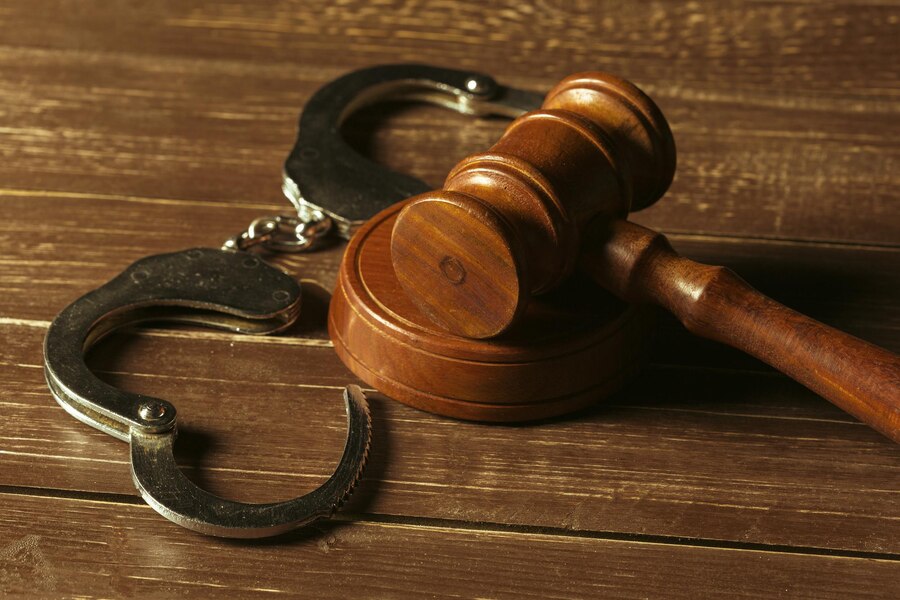A bail hearing is a legal proceeding where a judge determines whether a defendant, an individual charged with a crime, should be released from custody pending trial. During this critical phase of the criminal justice of the bail hearing process, the judge weighs various factors, including the nature of the charges, the defendant’s criminal history, ties to the community, and the risk of flight. The purpose is to decide if the defendant can be released on bail, a sum of money or bond set to ensure their return for trial, and under what conditions their release would be appropriate.
Our understanding of a bail hearing also encompasses its important role in the broader legal system, ensuring that the principles of law and the presumption of innocence are upheld. The defendant, while facing allegations, retains their legal rights and may be granted bail unless there is substantial reason to believe they will not appear in court or pose a significant risk to the community. The judge must balance the defendant’s rights with public safety and the integrity of the judicial process.
The outcome of a bail hearing can have profound implications for the defendant’s capacity to prepare for their trial while not in custody, maintain employment, and continue personal affairs. We recognize the necessity of a just and fair hearing, whereby the judge bases their decision on the evidence presented, the law, and the specific circumstances of each case. This process exemplifies the judicial system’s commitment to fairness and justice while protecting society’s interests.
Understanding Bail Hearings
Before a bail hearing begins, we should be aware that its primary function is determining whether a defendant can be released from custody before trial and under what financial and behavioral conditions.
Purpose And Procedure
The main purpose of a bail hearing is to decide on the release of a defendant awaiting trial. When a person is arrested, they have the right to request a bail hearing. The procedure involves a courtroom setting where a judge listens to arguments from the defense attorney and the prosecutor. We consider factors like the nature of the alleged crime and the defendant’s criminal history before determining eligibility for bail.
- Nature of Crime: More severe crimes typically result in higher bail amounts or denial of bail.
- Criminal History: A defendant with a history of criminal behavior may face higher bail or be deemed ineligible for bail.
Roles and Responsibilities
At a bail hearing, the judge presides over the proceedings and makes the final decision on bail. The prosecutor argues on behalf of the state, often aiming to set bail or oppose release. The defense attorney advocates for the defendant’s release, often emphasizing ties to the family and community as assurance the defendant will not flee.
- Judge: Decides the bail amount and conditions.
- Prosecutor: Presents reasons against the defendant’s release.
- Defense Attorney: Argues for the defendant’s release on the least restrictive terms.
Determining Bail Amounts
The bail amount is set during the hearing and can vary considerably. We use bail schedules for reference, but the final amount depends on multiple variables, such as the defendant’s financial resources and the severity of the alleged crime. The judge determines if the defendant may pay bail, be released on their own recognizance, or be held without bail.
- Bail Schedule: A list providing standard bail amounts for different offenses.
- Financial Resources: Consideration of the defendant’s ability to afford bail without undue hardship.
Conditions Of Bail
If the court grants bail, the defendant must comply with the set conditions of release. These conditions are designed to ensure that the defendant appears for future court dates and does not commit additional crimes. Common conditions may include travel restrictions, check-ins with a pretrial officer, and no-contact orders with victims or witnesses.
- Travel Restrictions: Limitations placed on the defendant’s ability to travel.
- Check-ins: Regular meetings with a court officer to ensure compliance with bail conditions.
Each of these steps helps maintain the integrity of the judicial process while balancing the rights of the defendant against the concerns for public safety.
Post-Bail Hearing Considerations
Once bail is set by the court, we need to understand the subsequent steps required for release, the possibilities of challenging the bail decision, and the obligations the defendant must adhere to after being released.
Posting Bail And Release Process
Posting Bail: Should the defendant, with or without the help of family, decide to post bail, they have options. They can pay the full cash amount or obtain a bail bond through a surety. If opting for a surety bond, a bail bond company usually requires collateral plus a non-refundable fee, typically 10% of the bail amount.
Release Process: Upon receipt of bail—be it cash, bond, or collateral—our legal system processes the payment and arranges for the defendant to be released from jail. The timing may vary, but release typically happens within a few hours to a day after posting bail.
Potential Outcomes And Appeals
If we find the bail set is too high or has unfair conditions, an appeal can be made to a higher court seeking to lower bail or alter the conditions. It’s critical to understand that prevailing in such appeals often requires demonstrating why the initial court’s decision was unreasonable or arbitrary.
Ongoing Obligations And Compliance
As a released individual, the defendant is required to comply with specific conditions set by the court. Common conditions can include restrictions on travel, maintaining employment, and regular check-ins with a monitor. Failing to meet these conditions or missing future court dates can result in arrest and forfeiture of the posted bail. We must ensure full understanding and adherence to these obligations, which are critical for maintaining the defendant’s standing with the court and the community.
Read Also:







Hello my loved one I want to say that this post is amazing great written and include almost all significant infos I would like to look extra posts like this
Magnificent beat ! I would like to apprentice while you amend your site, how can i subscribe for a blog web site? The account helped me a acceptable deal. I had been a little bit acquainted of this your broadcast offered bright clear idea
Ive read several just right stuff here Certainly price bookmarking for revisiting I wonder how a lot effort you place to create this kind of great informative website